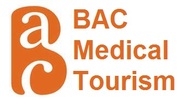Spinal Cord Injury
A spinal cord injury has the closest relationship with the paralysis syndrome, which is caused by ischemia or hemorrhaging of the spinal cord, the rapidly progressive compression, necrosis, demyelination, or myelitis.
Prognosis
A pressure or cut on the spinal cord can cause damage of gray matter in the spinal cord nerve cells. The white matter nerve fiber and the different amounts of hemorrhaging, where the most severe is in the center of the vessel, the parts of the damaged area become gelatinous liquefactive cavities or ferrite liquefactive cavities. These can become a progressive fibrosis or/and cavity in the brain or/and the membrane of the spinal cord after months or years time. Parts of the damaged area can become the delayed central cord syndrome.
Clinical Effect
The complete spinal cord injury: 1) All of the voluntary movement below the injury level are a persistent loss immediately, 2) Anesthesia below the injury level and reflection termination in the segment of spinal cord transection (spinal shock). Following are the hyperreflexia stage and sequela stage.
The first 10 days after the injury are the most dangerous period, risk factors include: infection, shock, intestinal obstruction, etc. Examinations such as CT's and MRI's, and appropriate treatment such as decompression of the spinal cord surgery should be arranged, but physically moving the patient should be minimized during this period. The death rate rapidly declines 3 months after onset of injury, about 86% paraplegia patients and 80% quadriplegia patients can live more than 10 years after onset of injury. No other effective treatment can help the patients in this period except the symptomatic treatment.
Wu Stem Cells Medical Center holds the view that the newest therapy to treat a sequelae injury of the spinal cord is through stem cell therapy. In treatment practice they found that the secretion function from the stem cells can start a self-repair function in the nervous tissue; so the stem cells be transplanted into the body and therefore can participate in the repair of the nerve injury to recover the nerve pathway, then the patients can obtain more functions.
Prognosis
A pressure or cut on the spinal cord can cause damage of gray matter in the spinal cord nerve cells. The white matter nerve fiber and the different amounts of hemorrhaging, where the most severe is in the center of the vessel, the parts of the damaged area become gelatinous liquefactive cavities or ferrite liquefactive cavities. These can become a progressive fibrosis or/and cavity in the brain or/and the membrane of the spinal cord after months or years time. Parts of the damaged area can become the delayed central cord syndrome.
Clinical Effect
The complete spinal cord injury: 1) All of the voluntary movement below the injury level are a persistent loss immediately, 2) Anesthesia below the injury level and reflection termination in the segment of spinal cord transection (spinal shock). Following are the hyperreflexia stage and sequela stage.
The first 10 days after the injury are the most dangerous period, risk factors include: infection, shock, intestinal obstruction, etc. Examinations such as CT's and MRI's, and appropriate treatment such as decompression of the spinal cord surgery should be arranged, but physically moving the patient should be minimized during this period. The death rate rapidly declines 3 months after onset of injury, about 86% paraplegia patients and 80% quadriplegia patients can live more than 10 years after onset of injury. No other effective treatment can help the patients in this period except the symptomatic treatment.
Wu Stem Cells Medical Center holds the view that the newest therapy to treat a sequelae injury of the spinal cord is through stem cell therapy. In treatment practice they found that the secretion function from the stem cells can start a self-repair function in the nervous tissue; so the stem cells be transplanted into the body and therefore can participate in the repair of the nerve injury to recover the nerve pathway, then the patients can obtain more functions.

